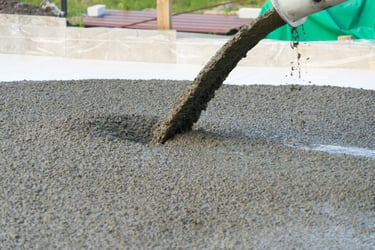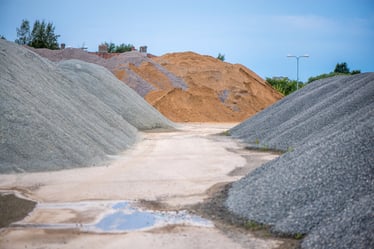Comparing Ready-Mix Concrete and Site-Mixed Concrete

Concrete is one of the most widely used construction materials, and it is made from three basic components: water, aggregates, and Portland cement. The construction industry uses two main types, which are called ready-mix concrete and site-mixed concrete. Selecting the right type for a project is very important: both types have their own specifications, advantages and disadvantages. While both types are viable in concrete construction, one may be more beneficial than the other depending on project conditions.
Ready-mix concrete is manufactured in a plant and delivered to the construction site in an unhardened and plastic state, ready for use. Ready-mix concrete is sold by volume, usually expressed in cubic meters.
Optimize your building design and construction methods to reduce costs.
Site-mixed concrete is volumetric concrete that is prepared at the construction site, as its name implies. Concrete components are mixed in specific ratios to obtain the desired strength. This method requires using formulas to determine the amount of materials and steps to obtain the desired consistency. Workers must be careful and meticulous with the material’s proportions to avoid any quality issues in the concrete.
Differences Between Ready-Mix and Site-Mixed Concrete


Both concrete types are viable in construction projects, but one may have significant advantages over the other depending on project needs. The following table describes some advantages and disadvantages of each type of concrete:
|
Factor Being Considered |
Ready-Mix Concrete |
Site-Mixed Concrete |
|
Time |
Delivered ready to use and less time-consuming. |
Slower process due to multiple steps, formulas and the setting time. |
|
Equipment |
Does not require equipment at the construction site. |
Requires a weigh batch mixer to make concrete on-site. |
|
Distribution |
Can be delivered to multiple sites within a project. |
Must be mixed at the exact point of use, to avoid contamination |
|
Recommended Application |
High-rise structures |
Low-rise structures |
|
Storage Requirements |
Does not require additional storage space for raw materials |
Requires a controlled storage space, to manage and protect materials like cement and aggregates |
|
Waste |
Material waste at the site is minimal |
There is some material loss during storage and mixing |
|
Quality |
Consistent quality, thanks to an automated and controlled environment. |
Continuous supervision is for consistency among batches. Setting time may vary due to inconsistency. |
|
Work force |
Skilled labor is required only to pour and compact the concrete. |
Requires more man-hours to prepare concrete at the project site. |
|
Concrete can be calculated as a single item. |
Materials must be estimated individually, and their purchase must be planned separately. |
|
|
Space |
When planning construction projects that demand large amounts of materials, transportation efficiency becomes just as important. Using quality second-hand day cab trucks helps optimize logistical expenses without compromising functionality or reliability. |
Requires space for material storage and batch mixers. |
|
Batch Size |
Large amounts of concrete can be delivered. |
Mixing large amounts of concrete on-site is difficult. |
|
Site location |
If the batching plant is located very far from the construction site, the concrete will require retardants and other admixtures to prevent setting. Transportation costs will increase, there may be quality concerns. |
Requires the transportation of all materials and mixing equipment to the construction site. |
Ready-mix concrete tends to be better for many projects, in spite of its higher cost. Ready-mix concrete offers a higher quality, and variation between batches is minimal when concrete is prepared in a plant environment. Another key factor is the project’s location: transportation requirements partially determine which type of concrete is more suitable for a project.
Ready-mix concrete is normally recommended for large projects that require a high volume. On the other hand, site mixing is a better option for small projects and renovations, where the concrete volume is smaller.
Nearby EngineersNew York Engineers has a MEP design track record of 1,000+ projects. Contact us via email (info@ny-engineers.com) or phone (786) 788-0295212-575-5300, and make sure your building systems meet codes.

Anuj Srivastava
Anuj Srivastava is a principal partner at NY Engineers. He is known for his MEP franchise market knowledge. Anuj is currently leading a team of 100+ MEP/FP engineers and has successfully led over 1500 franchise projects in the US.
Join 15,000+ Fellow Architects and Contractors
Get expert engineering tips straight to your inbox. Subscribe to the NY Engineers Blog below.

